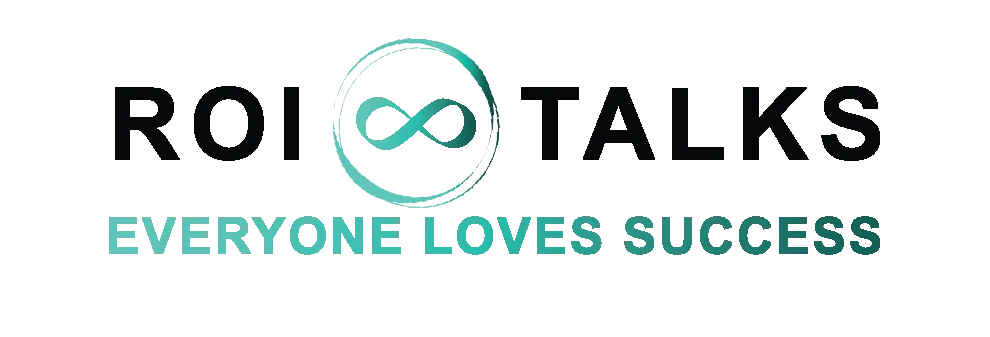
Everyone Loves Success
ROI TALKS
Roi Talks Blog

Framework of How Loyalty Marketing & Storytelling Is A Match Made In Heaven
Together, loyalty marketing and storytelling are a powerful combination for businesses looking to build long-term relationships with their customers. Loyalty marketing is the practice of rewarding customers for their repeat business, and storytelling is the use of narrative to connect with customers and build emotional connections.
Having a framework for using storytelling in loyalty marketing can help businesses create a more cohesive and effective strategy for building long-term relationships with their customers. Here are a few reasons why having a framework is beneficial:
Provides structure: A framework provides a structure for how to approach storytelling in loyalty marketing. This structure can help ensure that all aspects of the strategy are addressed and that they work together cohesively.
Increases efficiency: By having a framework in place, businesses can save time and resources by not having to reinvent the wheel each time they create a new loyalty marketing campaign. The framework provides a roadmap for how to approach the campaign and can be customized based on the specific needs and goals of the business.
Facilitates collaboration: A framework can help facilitate collaboration among different departments and stakeholders within the business. By having a shared understanding of the approach, everyone can work together more effectively and efficiently.
Enables optimization: With a framework in place, businesses can more easily measure the effectiveness of their storytelling in loyalty marketing efforts and make adjustments as needed. This enables them to optimize their strategy over time and ensure that they are achieving their goals.
Overall, having a framework for using storytelling in loyalty marketing can help businesses create a more effective and efficient strategy for building stronger relationships with their customers and increasing customer retention and revenue over time.
Research has shown that storytelling can be a powerful tool for creating emotional connections with customers. A study by Deloitte found that companies that use storytelling in their marketing can increase brand recall and customer engagement by up to five times compared to those that rely solely on features and benefits. Storytelling has also been shown to increase trust and loyalty. A study by OneSpot found that storytelling can increase the likelihood of customers recommending a brand by 17%.
Personalization is another aspect of storytelling that has been found to be effective in loyalty marketing. A study by Accenture found that 91% of consumers are more likely to shop with brands that recognize, remember, and provide relevant offers and recommendations. Personalized storytelling can make customers feel valued and appreciated, leading to increased loyalty and advocacy.
Creative storytelling can also make loyalty programs more engaging and memorable. A study by Forrester found that customers who participate in loyalty programs that have a compelling and exciting narrative are more likely to remain engaged and motivated to earn rewards. Creative storytelling can also help differentiate a business from its competitors and increase customer loyalty.
Here is a framework for using storytelling in loyalty marketing:
Define your brand story: Start by defining your brand story. This is the narrative that communicates your brand's values, mission, and purpose. It should be a compelling story that connects with customers on an emotional level and creates a sense of trust and loyalty.
Identify your audience: Next, identify your audience. Who are your customers, and what are their needs, wants, and values? Understanding your audience is critical to creating a story that resonates with them and fosters a sense of connection.
Collect customer stories: Collect stories from your customers. This can be done through customer surveys, social media engagement, or other methods. These stories should highlight how your brand has impacted their lives and create a sense of community and belonging among your customers.
Personalize your loyalty program: Use data to personalize your loyalty program to the specific needs and wants of each customer. This can include rewards for purchases, social media engagement, or other activities. This personalized experience can create a sense of exclusivity and VIP treatment, making customers feel valued and special.
Use creative storytelling: Use creative storytelling to communicate the benefits and rewards of your loyalty program. This can include creating a story about a journey that customers can take by earning rewards and reaching different levels in the program. The story should be engaging and memorable, creating a sense of excitement and anticipation among customers.
Measure and optimize: Finally, measure the effectiveness of your storytelling in loyalty marketing. Monitor customer retention, advocacy, and revenue to determine the impact of your efforts. Use this information to optimize your strategy and make improvements over time.
By following this framework, businesses can effectively use storytelling in loyalty marketing to build stronger relationships with their customers and increase customer retention, advocacy, and revenue over time.
One example of how loyalty marketing can carry out storytelling is through the use of brand storytelling. By creating a compelling narrative around the brand, businesses can connect with customers on an emotional level and build a sense of trust and loyalty. For example, a business might create a story about how it was started by a family who wanted to make a difference in the community, and how it has continued to support local causes and charities over the years. By sharing this story, the business can create an emotional connection with customers who share its values and want to support a company that is making a positive impact.
Another example of how loyalty marketing can carry out storytelling is through the use of customer storytelling. By collecting and sharing stories from customers, businesses can create a sense of community and belonging among their customers. For example, a business might create a customer spotlight program where it features a different customer each month on its website or social media accounts, sharing their story of how the business has impacted their life or how they have used the products. By sharing these stories, the business can create a sense of community among its customers and encourage them to share their own stories as well.
Additionally, loyaltymarketing can also use storytelling through personalization. By collecting data on customer preferences, interests, and behaviour, businesses can create a loyalty program that is tailored to the specific needs and wants of each customer. For example, a business might use data to create a loyalty program that rewards customers for their purchases, but also for other activities such as social media engagement or providing feedback. By creating a personalized loyalty program, the business can create a sense of exclusivity and VIP treatment for its customers, making them feel valued and special.
Lastly, storytelling can also be used to create a more engaging and memorable loyalty program. By using creative and compelling narratives to communicate the benefits and rewards of the loyalty program, businesses can make it more interesting and engaging for customers. For example, a business might create a story about a journey that customers can take by earning rewards and reaching different levels in the loyalty program, complete with a map and different landmarks along the way.
By using storytelling to connect with customers on an emotional level, businesses can build stronger relationships with their customers over time & increase customer retention and revenue.
ROI TALKS™
Marina Plaza - Office 1004 -1006
Dubai Marina, Dubai, UAE




